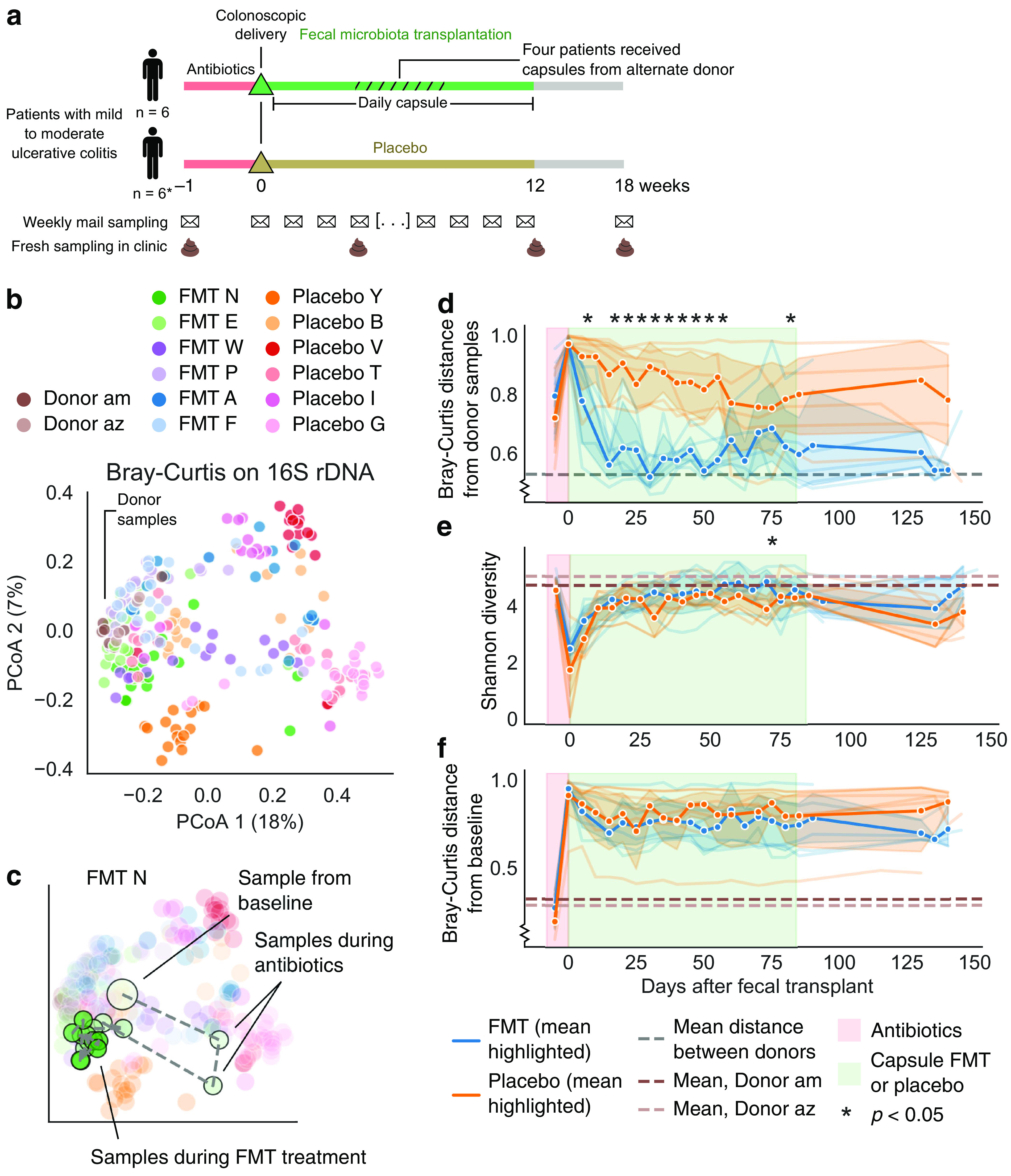FIG 1.

Fecal transplants resulted in global transfer and persistence of donor strains. (a) Design of the clinical trial and sampling. *, One placebo-treated patient had worsening symptoms and dropped out of the trial at 8 weeks. (b) Principal-coordinate analysis (PCoA) based on Bray-Curtis distance using 16S. Donor samples clustered on the left side. (c) Example patient trajectory over the course of the trial. Many patients demonstrated a strong shift in their gut microbiota in response to antibiotics and then an altered microbiota during and after FMT treatment (see Fig. S3). (d) Time series of each patient’s mean Bray-Curtis distance from the donor samples according to 16S data. FMT patients (blue) shifted toward donor communities (lower values on y axis). Bold lines and confidence intervals (95%) reflect the mean across patients. Lines for individual patients appear in the background. Asterisks indicate a significant difference between fecal transplant and placebo patients by a Mann-Whitney U test P < 0.05. Regions of the graph colored as in Fig. 1. (e) Alpha diversity (Shannon index) of 16S profiles indicated little difference between fecal transplant and placebo recipients. (f) Similarly, the two treatment groups showed similar extents of community change when compared against their baseline samples by Bray-Curtis distance of 16S data. See also Fig. S2.
